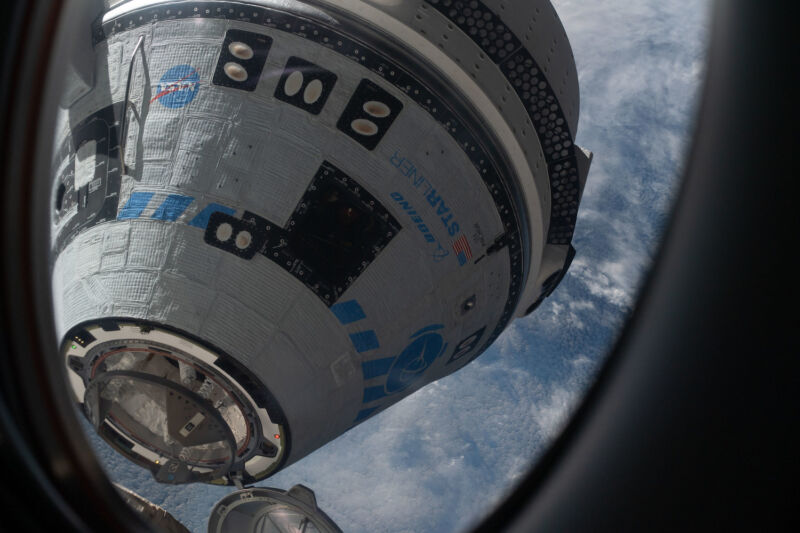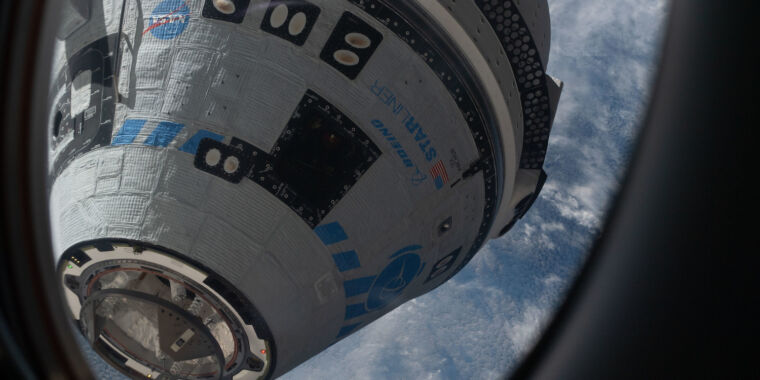
NASA
NASA and Boeing are making final preparations to undock the Starliner spacecraft from the International Space Station next Friday, Sept. 6. The spacecraft will then land at White Sands Space Harbor in southern New Mexico.
Astronauts Butch Wilmore and Suni Williams, who were originally scheduled to return to Earth in Starliner, will remain behind on the space station after NASA decided last week to complete the Boeing test flight without a crew on board. NASA officials decided it was too risky to put the astronauts on Starliner after the spacecraft experienced problems with its booster rocket during its flight to the space station in early June.
Instead, Wilmore and Williams will return home no earlier than February in a SpaceX Dragon capsule, extending their planned stay on the space station from eight days to eight months. The Starliner spacecraft is flying on autopilot and is expected to lift off around 6:04 a.m. EDT (22:04 UTC) on Sept. 6. The capsule will fire its engines to deorbit and plan a parachute-assisted landing in New Mexico at 12:03 p.m. EDT (04:03 UTC) on Sept. 7, NASA said in a statement Thursday.
NASA officials on Thursday completed the second part of a two-day Flight Readiness Review to prepare the Starliner spacecraft for undocking and landing. However, there are strict weather rules for landing a Starliner spacecraft, so NASA and Boeing managers will decide next week whether to proceed with the return next Friday night or wait for better conditions at the White Sands landing zone.
In recent days, flight controllers have been tweaking parameters in the Starliner’s software to handle a fully autonomous return to Earth without input from astronauts flying in the cockpit, NASA said. Boeing has conducted two uncrewed Starliner test flights that performed the same type of autonomous return and landing operations. The mission, called the Crew Flight Test (CFT), marked the first time astronauts have launched into orbit aboard a Starliner spacecraft and is expected to pave the way for future operational missions to rotate four-person crews to and from the space station.
Now that the Starliner spacecraft failed to complete its test flight as intended, fundamental questions remain about the future of Boeing’s commercial crew program. NASA Administrator Bill Nelson said last week that Boeing’s new CEO, Kelly Ortberg, had told him the aerospace company remained committed to Starliner. However, Boeing will have to pay the cost of fixing problems with overheated boosters and helium leaks that hampered the CFT mission. Boeing has made no public statements about the long-term future of the Starliner program since NASA decided to evacuate its astronauts from the spacecraft for the return trip to Earth.
Preparing for an eventuality
NASA is clearly more comfortable returning Wilmore and Williams to Earth in SpaceX’s Dragon capsule, but the change is disrupting crew operations on the space station. This week, astronauts reconfigured the interior of a Dragon spacecraft currently docked at the outpost to support six crew members in the event of an emergency evacuation.
With Starliner leaving the space station next week, Dragon will become the lifeboat for Wilmore and Williams. If a fire, collision with space debris, medical emergency or something else forces the crew to evacuate, the Starliner astronauts will ride home on makeshift seats placed under Dragon’s four regular seats, where crews typically load cargo during launch and landing.
At least one of the Starliner astronauts would have to come home without a spacesuit to protect them if the Dragon spacecraft’s cabin depressurizes during descent. This has never happened before on a Dragon mission, but astronauts wear SpaceX pressure suits to mitigate the risk. The four astronauts who launched on Dragon have their suits, and NASA officials said a spare SpaceX suit already on the space station fit one of the Starliner astronauts, but they did not identify which one.
A pressure suit for the other Starliner crew member will launch on the next Dragon spacecraft, the Crew 9 mission, scheduled to launch no earlier than Sept. 24 aboard a SpaceX Falcon 9 rocket. The Starliner problems have also disrupted plans for the Crew 9 mission.
On Friday, NASA announced it would remove two astronauts from the Crew 9 mission, including the commander, Zena Cardman, who is a spaceflight rookie. Veteran astronaut Nick Hague will vacate the pilot’s seat to take over as Crew 9 commander. Russian cosmonaut Alexander Gorbunov will join him.
NASA and the Russian space agency Roscosmos have an agreement to send Russian cosmonauts on Dragon missions and American astronauts on Russian Soyuz flights to the station. In exchange for NASA giving Gorbunov a ride, NASA astronaut Don Pettit will fly to the station aboard a Soyuz spacecraft next month.
The so-called “seat-swapping” arrangement ensures that even if Dragon or Soyuz were to remain grounded, there would always be at least one American astronaut and one Russian cosmonaut on the space station. They would oversee each partner’s segment of the outpost, providing propulsion, power generation, directional control, thermal management and other critical services to keep the lab operational.

